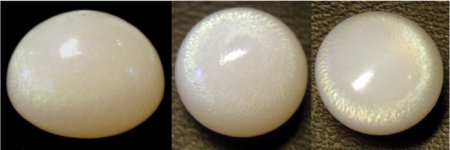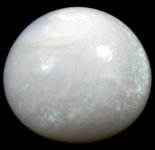Some natives of the Sulu Archipelago believe that the nautilus pearl is a most unlucky object to possess, for should a man engage in a fight while wearing such a pearl he would inevitably be killed. Hence, when a native by chance comes across one of them, he very quickly throws it away, as a probable bringer of ill-luck. Occasionally, however, such pearls fall into the hands of those who are less influenced by superstition, and one weighing 72 grains was given, in 1884, to an Australian gentleman, by Mohammed Beddreddin, brother-in-law of the Sultan of Sulu. This was a perfect, pear-shaped pearl of a creamy-white hue and somewhat translucent; it is composed of the porcelanous, not of the nacreous constituent of the shell.
It has been stated that this Sulu superstition is not shared by the natives of Celebes Island, near Borneo, for here such pearls are kept as charms and talismans.


